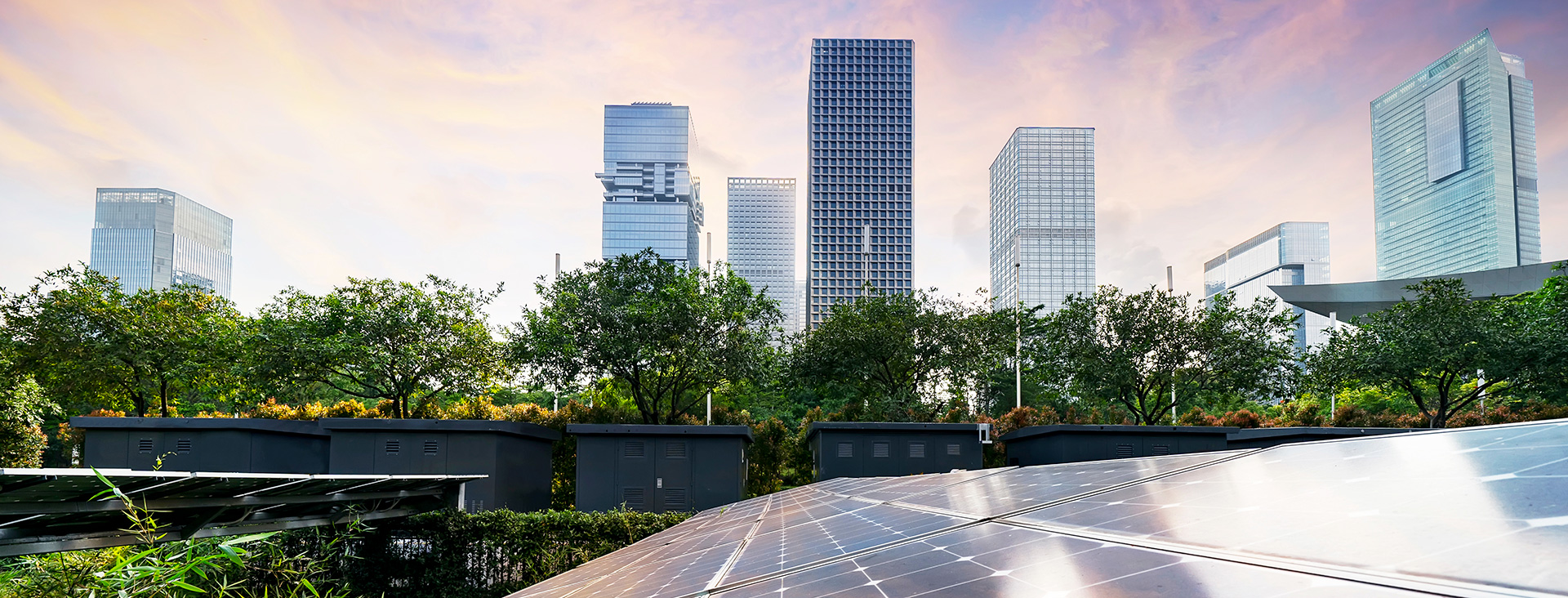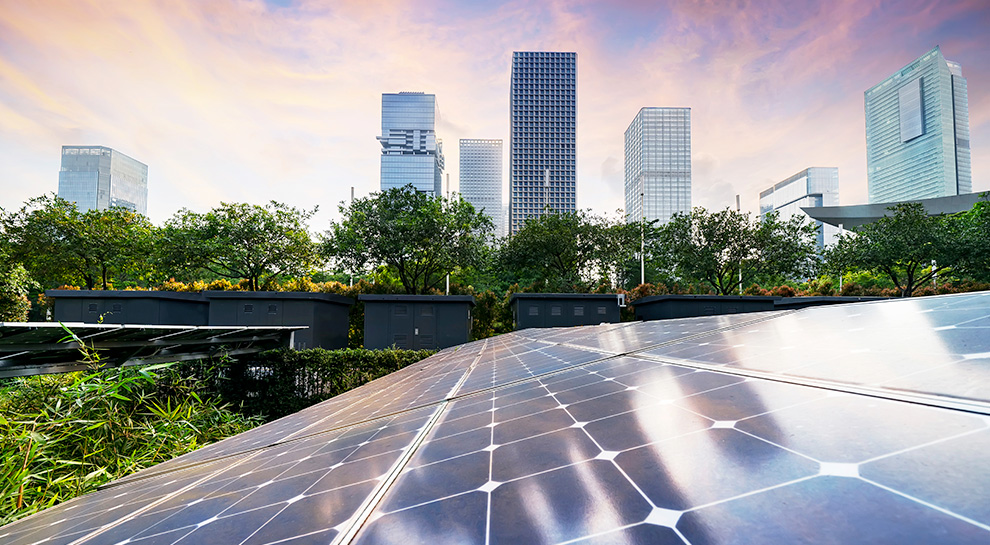


Public Administration
We help the Public Administration in the energy redevelopment and seismic adaptation of public offices, school buildings, sports facilities, health facilities and social housing. We propose solutions and strategies to improve the ecological and environmental footprint of public facilities and its community.
Meeting the objective of the Integrated National Energy and Climate Plan
Cost reduction through incentives and sustainable finance
Reduction of CO2 emissions
What we do for you
Our collaboration will allow you to meet the target set by the National Integrated Energy and Climate Plan for the efficiency of public housing of 3% per year and to reduce CO2 emissions in the atmosphere by counteracting the greenhouse effect with redevelopment of green areas and planting of new trees.
We support the Communities to implement an energy policy and sustainable development in line with the "ComuneClima" program defined on the European Energy Award.
We activate public - private partnerships with facilities interested in carrying out redevelopment and efficiency of public heritage reducing energy consumption and CO2 emissions in the atmosphere.
We support the Public Administration in the activities of:
- Energy Diagnosis - Energy Audit
- Energy Certification
- Certification of Static Adequacy
- Certification of fire prevention
- Photogrammetric survey with drones and laser scanners
- Energy Consultancy casaclima
- Energy efficiency of heating, cooling and domestic hot water systems
- Advanced remote management - Consumption control and monitoring system
- Revamping and automation of the lighting system
- Energy upgrading and seismic adaptation of the building
- Design and construction of new renewable energy plants
- Electric mobility
- Management of incentives and credit transfer
- Green analysis and design of parks and public areas with particular attention to carbon offset strategies
The Public Administration is one of the largest consumers of energy in Italy
The building park of the Public Administration has a high margin of efficiency, so it is important to choose the most innovative technologies, the most suitable contractual tools, incentives and more effective financing.
The possible interventions of energy efficiency in the buildings of the Public Administration are multiple, depending on the purpose of use of the building and the state of the envelope and systems. From the point of view of plant engineering will be considered interventions on the production of thermal energy, which represents the largest share of consumption.
In the case of central and local PA offices, the main savings actions will focus on heating, plant thermoregulation and summer air conditioning.
In school buildings, the intervention perimeter will have to consider above all the requalification of the heating system with the correct sizing and its regulation, in relation to the partial use of the structure in terms of hours and volumes.
In the case of sports centres, both the heating and the production of domestic hot water for swimming pools and showers should be evaluated.
We will show you the most efficient improvements
In order to identify the most efficient improvement measures, it is necessary to draw up an energy diagnosis, a technical analysis which is also necessary to access incentives.
Thermal insulation interventions and efficiency of thermal and lighting systems, are achievable if supported by incentives.
Interventions with a reduced return time
- replacement of winter air conditioning systems with high efficiency technologies;
- installation of cogeneration or regeneration plants;
- installation of solar thermal collectors, also combined with solar cooling systems;
- replacement of electric water heaters with heat pump water heaters;
- installation of zonal thermoregulation systems and heat accounting;
- redevelopment of lighting systems with time control;
- installation of photovoltaic systems integrated to the roofs;
- installation of BEMS (Building Energy Management System) systems for remote monitoring and management of services provided by technological systems;
- efficiency of management strategies with on/off, adjustment and calibration of existing plants.
Interventions with a high return time
- thermal insulation of the building envelope;
- replacement of fixtures with related shading systems.
School buildings
The Italian municipalities are owners of about 60% of the volumes of public buildings in Italy, with very diverse uses; schools represent a large number. About 52,000 facilities, of which 22,000 built before 1970, have annual consumption of about 9.6 TWh (1.4 TWh electric and 8.2 TWh thermal).
By intervening on the most energy-intensive schools, about 20% of the Italian school patrimony with 2.6 TWh/year of energy consumption, consumption could be reduced by 48% saving about 170 million euros per year and avoiding the emission of 312,000 tons CO 2.
This consumption is due to the poor state of buildings and facilities. Heat generators in schools are generally obsolete with low seasonal yields and high thermal power, failing to ensure comfort temperatures for the high thermal dispersion of the building envelope.
The regulation system, moreover, in 61% of cases has only one control zone, the distribution system has pipes in a very poor state of preservation with poor thermal insulation. Only 22% of school buildings are equipped with summer air conditioning.
The potential for efficiency and improvement of the thermo-hygrometric comfort of school buildings is considerable.
Central and local public buildings
The public management buildings, used as administrative offices, are about 13,500 of which 3,000 of the central PA with an annual consumption of 4.3 TWh of energy (1.3 TWh electric and 3 TWh thermal) and an expense of 644 million euros.
20% of these buildings are particularly energy-intensive with an annual consumption of 1.2 TWh and an expenditure of 177 million euros. Consumption that could be reduced by 40% by intervening on the building envelope and systems, with an annual saving of 73 million euros and the reduction of 130,000 tons of CO2 emitted.
Gas-fired heating systems are 62%, while oil-fired plants are about 22%. Only 34% of the buildings have a control system with thermostatic valves and only 46% of the buildings have a summer air conditioning system.
What guarantees you will have
The integrated redevelopment of the building-plant system is certified with the protocol casaclima R contracted with EPC (Energy performance contract) and guaranteed by specific insurance policies.
Casaclima R protocol
Certification protocol developed specifically for the redevelopment of existing buildings. It guarantees your building efficiency, sustainability and build quality.
EPC contract
The EPC contract has as its object the energy improvement of a building or a plant in order to achieve a better energy performance and therefore a subsequent saving.
Contact us now for a free inspection
We will guide you in all the phases of energy redevelopment and seismic adjustment of your building.
Request for offer
Send us your request by calling us, writing us an e-mail or filling out the form below.
Preliminary analysis
We will make an inspection with photographic and thermographic analysis and identify the improvements.
Preparation of the offer
We will identify the work to be done and make an economic-financial analysis.
Resolution of the Shareholders' Meeting
Submit to the general meeting and confirm our offer.
Design and planning of the offer
Construction site opening, works testing and central plant management.
